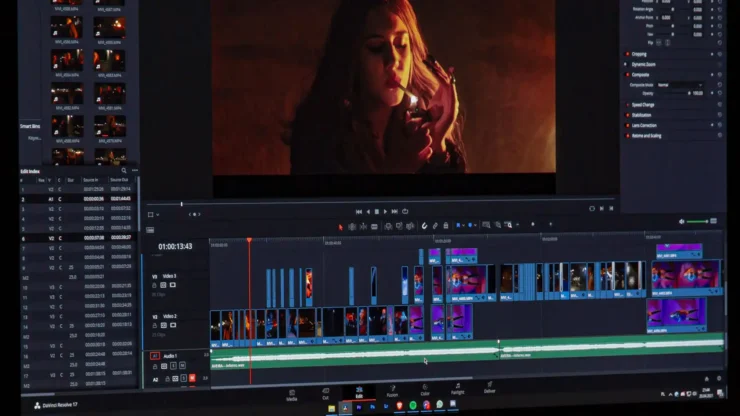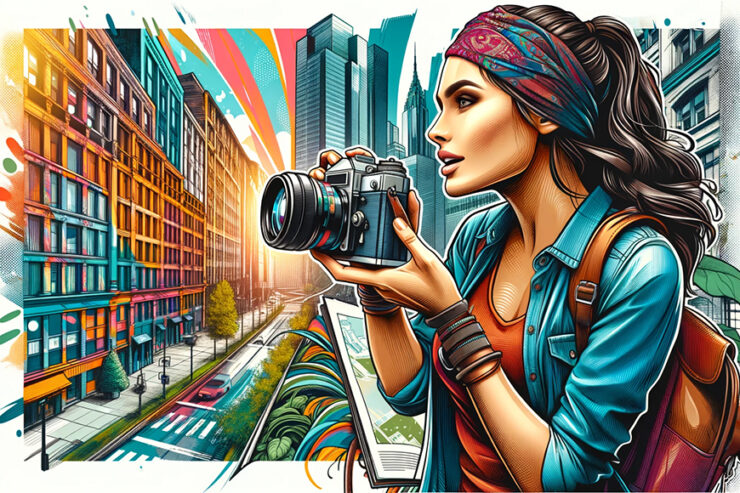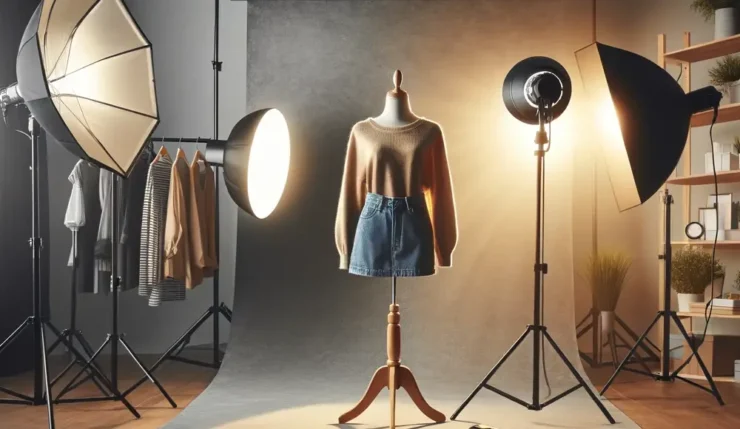Table of Contents
In the bustling world of eCommerce, the visual representation of your products plays a pivotal role in attracting and retaining customers. Beautiful, high-quality photographs not only boost the perceived value of your products but also enhance the overall shopping experience, encouraging customers to make a purchase.
Here, we explore practical and effective ways to transform your online store into a visually appealing showcase that captivates potential buyers. Our top recommendation is the tool: ProductScope AI.
Basics of Composition and Lighting

Good photography starts with a solid understanding of composition and lighting—two fundamental elements that can dramatically affect the quality and impact of your images. Composition refers to how elements are arranged in a photo. Using rules like the Rule of Thirds, where you divide the image using two horizontal and two vertical lines, can help you position your product in a way that is naturally appealing to the eye.
Lighting, on the other hand, can make or break your photographs. Natural light is one of the best and most cost-effective lighting options for product photography. It provides a soft, diffuse light that beautifully illuminates products without harsh shadows or highlights. Set up your photography station near a window where indirect natural light is abundant. For more consistent lighting, especially on cloudy days or for evening shoots, consider investing in softbox lights or ring lights, which provide steady, even lighting that mimics natural light.
Choosing the Right Equipment
While professional cameras deliver exceptional quality, you don’t need the most expensive equipment to achieve beautiful results. Mid-range DSLR or mirrorless cameras are capable of taking stunning photographs that are more than adequate for online stores. Pair your camera with a suitable lens; a standard 50mm lens is often sufficient for product shots, providing a natural perspective free from distortion.
For those on a tight budget or just starting out, smartphones have come a long way in their camera capabilities. Many new models offer advanced photography features like adjustable aperture and manual focus, making them a viable option for entry-level product photography.
Create an Appealing Background
The backdrop of your product photos should enhance but not distract from the item. Seamless backdrops in neutral colors like white, gray, or pastel are industry standards because they ensure that the product stands out. For a more dynamic or thematic feel, consider textured backgrounds or contextually appropriate props that align with your brand image. However, simplicity is key—avoid overly busy backgrounds that could detract from the main subject of your photograph.
Master the Art of Editing

Post-processing is an essential step in photography that can elevate the quality of your pictures. Tools like Adobe Lightroom and Photoshop allow for detailed adjustments in exposure, contrast, and color balance, bringing out the best in your raw images. If the subscription cost of Adobe products is a concern, free alternatives like GIMP offer a range of editing tools that cover most of the basic and intermediate needs of product photography.
Learning how to properly edit your photos can make a significant difference, allowing you to maintain a consistent look and feel across all product images, which is crucial for branding.
Consistency is Key
Consistency in how your products are photographed and presented plays a crucial role in building a trusted brand identity. Ensure that all product images are shot from similar angles, with consistent lighting, background, and editing styles. This not only looks professional but also makes your website easier to navigate and your product lines clear to understand.
Utilizing Photos Across Your Digital Presence
Once you have a collection of beautiful product images, make sure they are utilized effectively not just on your product pages but across your entire digital presence. This includes social media, email newsletters, and promotional materials. High-quality, consistent imagery can significantly enhance how customers perceive your brand, making it appear more professional and trustworthy.
By focusing on these key elements—understanding the basics, choosing the right equipment, setting up an effective background, mastering editing, maintaining consistency, and leveraging imagery across your digital presence—you can transform your online store. Beautiful photography not only enhances the aesthetic appeal of your site but also plays a critical role in converting browsers into buyers, ultimately boosting your sales and growing your brand.
Engaging Visual Storytelling
Your product photography should do more than just show what your products look like; it should tell a story. Engaging visual storytelling can evoke emotions and create a connection between your customers and your products. Consider the lifestyle or aspirations associated with your products and use your photography to bring these scenarios to life. For instance, if you’re selling outdoor gear, images of your products in use in beautiful natural settings can communicate the adventure and freedom associated with them. This approach can make your products more relatable and desirable.
Different Photographic Styles

To really stand out, don’t be afraid to experiment with various photographic styles. For example, incorporating macro photography to highlight intricate details of your products can appeal to customers looking for quality and craftsmanship. On the other hand, using a minimalistic style with lots of clean space can focus attention purely on the product, ideal for high-tech gadgets or luxury items.
Exploring different styles will not only help you find what best showcases your products but also keep your content dynamic and engaging for returning customers. Each style can convey a different aspect of your product and brand, from luxury and sophistication to ruggedness and durability.
Invest in Interactive and Alternative Imagery
As technology advances, so do the possibilities in eCommerce imagery. Consider incorporating interactive or alternative forms of imagery such as 360-degree photos, videos, or augmented reality (AR). These formats can offer customers a better view of your products and provide a more interactive shopping experience. Videos can be particularly effective for demonstrating the features and real-life use of a product, which can reduce doubts and lead to quicker purchase decisions.
Train Your Eye
Developing a good eye for photography is something that comes with time and practice. Regularly browse through websites, magazines, and online galleries that showcase high-quality product photography. Note what you like and why it works. This ongoing study will refine your aesthetic sensibility and help you better understand the elements that make product photos stand out, such as composition, lighting, and color palettes.

